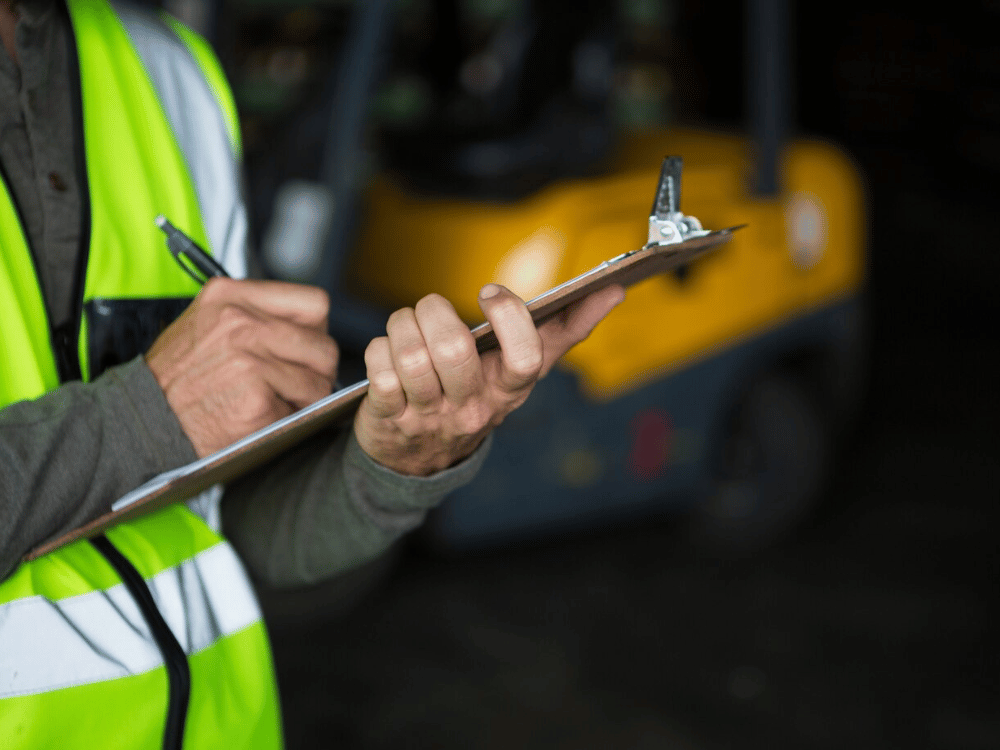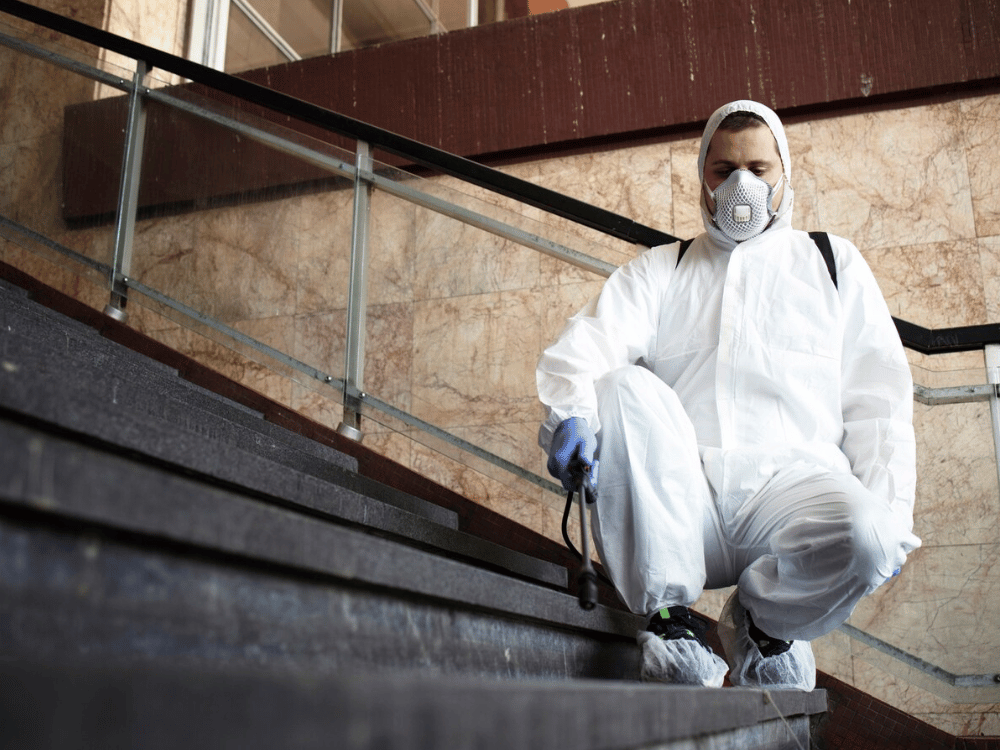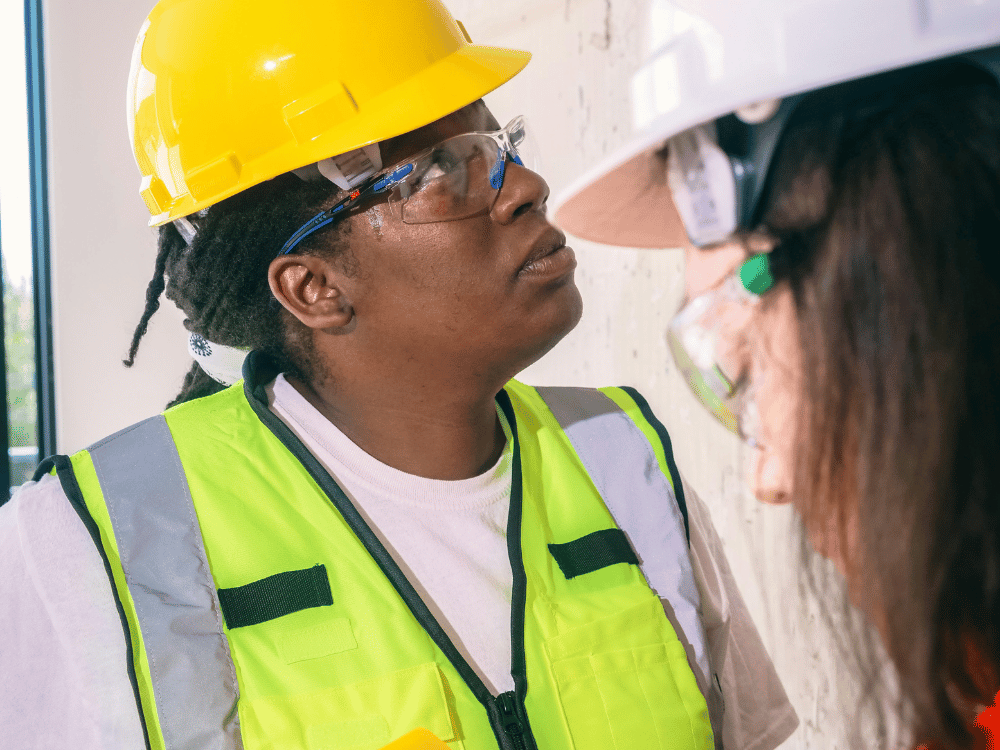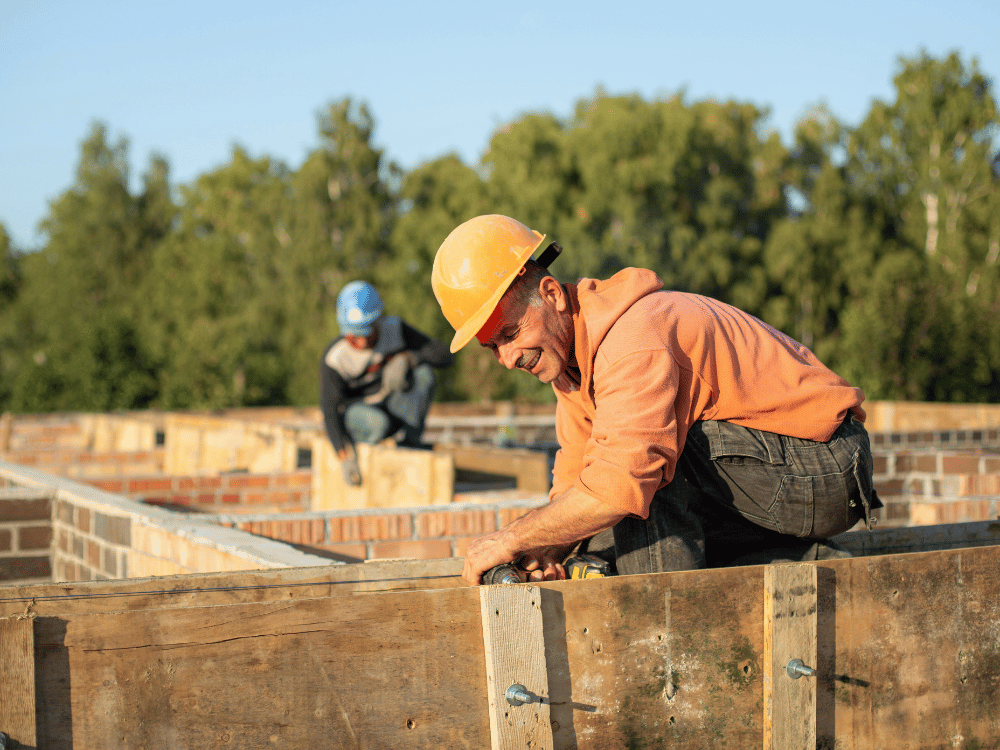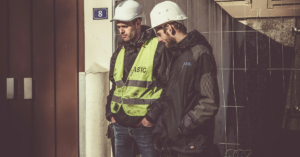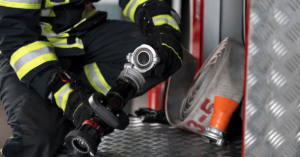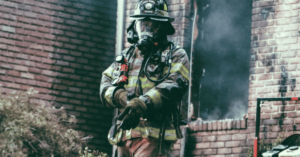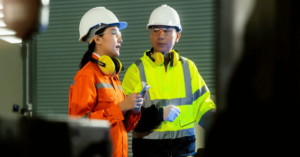Although it was banned in 1999, it’s estimated that approximately 1.5 million UK buildings still have asbestos.
Asbestos can be extremely dangerous – it’s responsible for around 5,000 deaths in the UK each year. But it only becomes toxic when damaged, and the carcinogenic fibres become airborne. That’s why the Control of Asbestos Regulations 2012 outlines robust measures to mitigate the risks to all workers.
But to who does the Control of Asbestos Regulations apply to? And how can you stay on the right side of the law if you have asbestos in your building?
TL;DR – Who Does the Control of Asbestos Regulations Apply To
Under the Control of Asbestos Regulations 2012 (CAR 2012), the ‘duty holder’ is responsible for controlling asbestos on the premises.
However, Regulation 4 of the legislation also dictates that all employees and people on-site have a role in staying safe from exposure. These include:
- Building Owners and Managers
- Tradespeople and Contractors
- Demolition and Construction Companies
- Maintenance Workers
- Construction Workers
- Electricians
- Plumbers
- Facilities Management Staff
- All Staff Working in Pre-2000 Buildings
Additionally, when workers are operating on or close to asbestos, employers must provide sufficient training.
Manage this stipulation by developing your staff via the asbestos awareness training course from us at TSW Training.
What is the Control of Asbestos Regulation?
The Health and Safety Executive (HSE) outlines that the Control of Asbestos Regulation provides an Approved Code of Practice (ACOP) for work that is likely to disturb asbestos.
Additionally, these working with asbestos regulations provide details of an employer’s legal obligations when it comes to the identification and subsequent processing of the compound.
However, along with informing business owners of their duties, the CAR 2012 also provides practical guidance on protecting employees from the risks and hazards of asbestos in non-domestic settings.
The Role of Duty Holders According to the Control of Asbestos Regulations
The HSE defines duty holders in a non-domestic building as:
- Building owner
- Landlord for the premises
- A person or organisation with clear responsibility for the building’s maintenance or repair
The duty holder is responsible for preventing exposure to asbestos. But there’s more to the legislation than simply keeping people safe.
Duty holders should also report the presence of asbestos-containing materials (ACMs) to the HSE. Subsequently, the duty holder is responsible for the maintenance and removal (if required) of any degraded ACMs.
Further to those requirements, the duty holder is also legally obliged to provide asbestos awareness training to any employees working close to the compound, as well as providing essential personal protective equipment (PPE).
Failure to comply with these regulations could result in punitive action against the duty holder.
Which Types of Premises are Subject to the Regulations?
As the use, sale, importation and export of asbestos was banned in the UK in 1999, the CAR 2012 regulations apply to properties built prior to 2000.
However, the regulations also apply to all non-domestic settings, regardless of industry, including:
- Offices
- Warehouses
- Distribution centres
- Factories
- Schools
- Hospitals
- Care homes
- Places of worship
- Museums or libraries
In addition to all those commercial venues, CAR 2012 also applies to shared spaces or ‘common areas’ in specific domestic settings such as flats. This can apply to:
- Stairwells
- Gardens
- Lifts
- Foyers
Who Are Subject to the Control of Asbestos Regulations?
As we mentioned earlier, the laws around the control of ACMs don’t just apply to duty holders. Many other parties also hold responsibility.
Let’s dive deeper into the workers covered by the legislation.
1. Building Owners and Managers
Building owners and managers are responsible for documenting any ACMs on their property via the asbestos register.
They also need to ensure those ACMs remain well maintained, reviewed regularly and removed safely (where necessary).
- Conduct asbestos risk assessment: Regulation 5 of the CAR 2012 states that when ACMs are identified, no maintenance, demolition or removal works should take place before a thorough risk assessment.
- Stay up to date with asbestos management: asbestos management plans track the maintenance and condition of the ACMs on your property.
- Maintain the asbestos register: ACMs should be recorded in the asbestos register as part of your management plan. The register should be updated with all works or findings from future assessments.
- Workers receive appropriate training: When ACMs have been identified on your property, employers are legally required to provide appropriate staff training. TSW’s asbestos awareness course is perfect for hitting this requirement.
- Suitable PPE: Any staff working close to or with asbestos should be provided with essential PPE.
- Keep medical records: Businesses must also legally keep updated health records for employees over 40 years. If exposure to asbestos occurs, the employees’ records must be updated with exposure dates and the type and levels of asbestos they were exposed to.
2. Tradespeople and Contractors
Some ACMs are more dangerous than others. Working with hazardous ACMs should only be carried out by specialist tradespeople with valid asbestos licences.
Examples of these dangerous items include sprayed asbestos coatings, asbestos insulation, asbestos lagging and most asbestos insulating boards (AIB).
However, lower-risk items like asbestos cement don’t require a licence or specialist contractors to remove them as the materials are not likely to emit dangerous fibres. But these works should still be carried out by competent, trained people.
Remember, a competent person can be defined as a Line Manager or someone who has completed IOSH or NEBOSH training.
3. Demolition and Construction Companies
Demolition and construction companies are legally required to dispose of ACMs in designated sites, which your local authority can highlight.
The non-compliant removal or disposal of asbestos can incur punitive actions like fines. Some business owners have even served custodial sentences for not removing asbestos safely.
In September 2021, an unlicenced asbestos removal company was fined £80,000 by the HSE. The company director was sentenced to 10 months for unsafely removing the compound from many properties nationwide.
4. Maintenance Workers
A thorough risk assessment should be completed before any maintenance work can be carried out on areas containing asbestos.
The review should consider the type of work being completed and assess whether this has the potential to disturb asbestos fibres. Following the review, the findings should be logged, and follow-up checks should be scheduled.
5. Construction Workers
As we mentioned earlier, it is now illegal in the UK for new construction projects to contain asbestos.
Before beginning any construction project, the property owner should conduct a thorough risk assessment. Construction teams can then ask to see a copy of this report. From here, workers can make necessary preparations in terms of relevant PPE.
There are three main types of Asbestos – Crocidolite, Amosite and Chrysotile – the most common type of asbestos.
Also known as blue, brown and white, these three compounds can be found in the majority of building materials, including:
- Insulation
- Felts
- Flooring materials
- Sprayed coatings
- Reinforced plastics (toilet seats and cisterns)
- Pipe lagging
- Mastic and sealants
- AIB
- Ropes, yarns and cloths (used in older fuse boxes and pipe gaskets)
- Paper (backing used for flooring applications)
- Textured coatings and paints (Artex)
6. Electricians
As the above list outlines, when working on older fuseboxes, electricians could encounter ACMs.
However, asbestos is found in many old electrical components and old insulation. Many electricians must work closely with insulation when completing works in existing loft spaces.
Business owners should complete a risk assessment before any work is carried out to mitigate the health risks of being so close to white and blue asbestos.
Assessments should then be passed to the electrical contractors with details of the ACMs’ location and condition. This information allows contractors to plan work and prepare relevant PPE.
7. Plumbers
Like electricians, plumbers will encounter asbestos as a common insulant for pipework and as a standard component in many boilers and cisterns.
In fact, ACMs are so prevalent in this industry that asbestos exposure kills around four plumbers every week in the UK.
Again, risk assessments and appropriate PPE are imperative to ensuring plumbing works are carried out safely.
8. Facilities Management Staff
Control of asbestos regulations applies to facilities management workers, too.
Many buildings constructed before 2000 will require regular maintenance. However, because these properties feature ACMs, standard cleaning or renovation requires correct planning to ensure workers don’t disturb any asbestos fibres.
Processes like this are especially true for high-maintenance areas like schools, where asbestos fibres present a big risk to occupants.
To that point, a facilities management firm was fined £20,000 in 2016 after they disturbed dangerous fibres while working on a primary school roof in Northampton.
9. All Staff Working in Pre-2000 Buildings
When working in a building constructed pre-2000, employees should assume that all areas could contain asbestos.
Although this may seem overly cautious, it is necessary to ensure workers remain safe from exposure when carrying out daily tasks.
In addition, under the Reporting of Injuries, Diseases and Dangerous Occurrences Regulations 2013 (RIDDOR), any identification of ACMs in the workplace should be reported.
As previously highlighted, Regulation 4 of CAR 2012 outlines that all employees have an obligation to operate safely around ACMs.
Control of Asbestos Regulations 2012 Summary
To continue our understanding of who the Control of Asbestos Regulations apply to, let’s investigate a couple of specific regulations.
What is Regulation 4 of the Control of Asbestos Regulations 2012?
As we alluded to earlier, Regulation 4 of CAR 2012 defines a ‘duty holder’ as the employer or building owner.
In addition, the regulation also mandates that:
“Every person must cooperate with the duty holder so far as is necessary to enable the duty holder to comply with the duties set out under this regulation.”
So, although the employer holds responsibility for identifying and maintaining ACMs on the property, employees and other workers are also obliged to cooperate with asbestos laws.
What Does Regulation 10 of CAR 2012 Cover?
Regulation 10 of the asbestos laws states that the duty holder must ensure their staff are sufficiently trained.
Ensure your team hits these requirements by enrolling them on our asbestos awareness course today.
It also defines that the employer should ensure employees are knowledgeable in these areas, as well as other details:
- The properties and effects of asbestos
- Types of materials likely to contain asbestos
- Operations which could result in exposure
- Emergency procedures
- Methods for decontamination
- Waste handling procedures
- Asbestos control limits
Frequently Asked Questions (FAQs)
Here are some frequently asked questions about who the Control of Asbestos Regulations apply to.
What are the Current Asbestos Regulations?
The current working with asbestos regulations outlines the Approved Code of Practice and guidance text for carrying out tasks that may result in asbestos disturbance.
What is the Duty to Manage Asbestos 1985 Regulation?
The Asbestos Licensing Regulations in 1983 meant that anyone working with asbestos insulation or coating required a licence from the HSE.
In 1985, blue and brown asbestos was banned in the UK, meaning duty holders needed to begin managing exposure to the compound in their properties.
Conclusion
When defining who the Control of Asbestos Regulations apply to, the clear answer is employers or building owners.
However, as this article covers, employees and other workers must assist in safe working practices.
Ensure you completely comply with the regulations by enrolling your team in an asbestos awareness course today. When you do this with us at TSW Training, you also benefit from our +99% pass rate!

